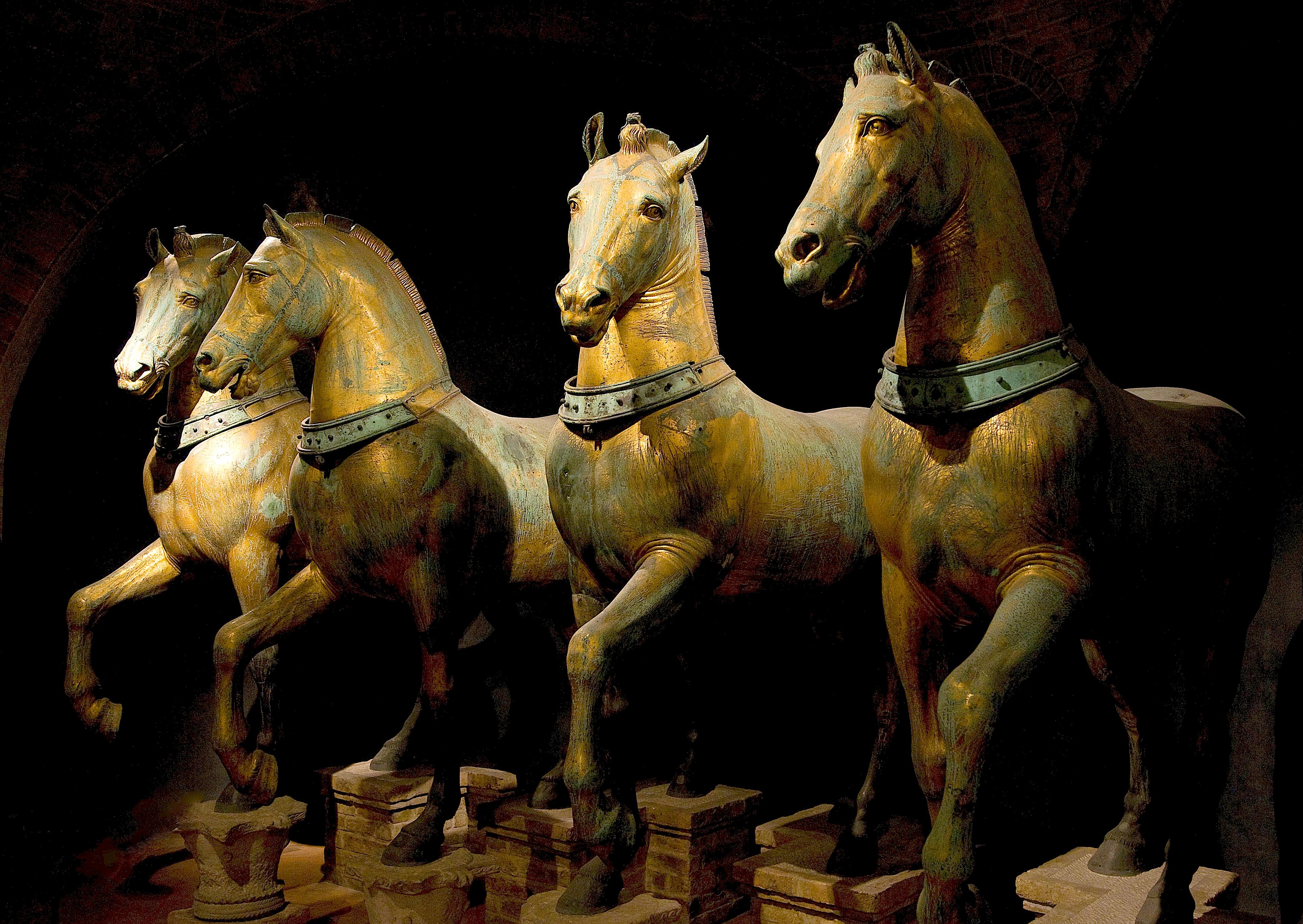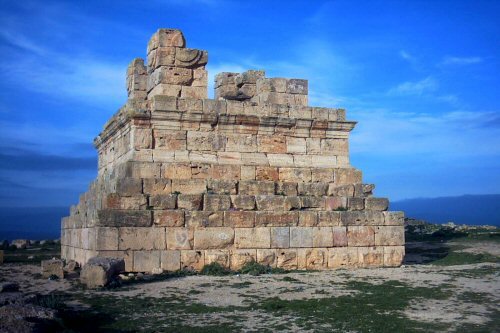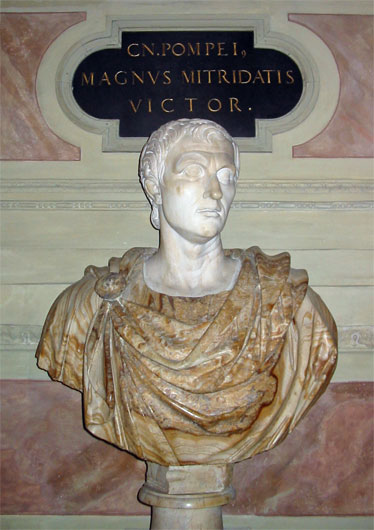|
Apobates
In antiquity, the term "desultor" (Latin, "one who leaps down") or "apobates" (Greek, "one who gets off") has been applied to individuals skilled at leaping from one horse or chariot to another. As early as the Homeric times, we find the description of a man, who keeps four horses abreast at full gallop, and leaps from one to another, amidst a crowd of admiring spectators. Eustathius on Homer's ''Iliad'', Lib. IV, assures us that riders might have up to six horses all abreast. In the games of the Roman circus, this sport was also very popular. The Roman desultor generally rode only two horses at the same time, sitting on them without a saddle, and vaulting upon either of them at his pleasure. He wore a hat or cap made of felt. The taste for these exercises was carried to so great an extent, that young men of the highest rank not only drove bigae and quadrigae in the circus, but exhibited these feats of horsemanship. Among other nations, this level of equestrian dexterity was ap ... [...More Info...] [...Related Items...] OR: [Wikipedia] [Google] [Baidu] |
Quadriga
A () is a car or chariot drawn by four horses abreast and favoured for chariot racing in Classical Antiquity and the Roman Empire until the Late Middle Ages. The word derives from the Latin contraction of , from ': four, and ': yoke. The four-horse abreast arrangement in quadriga is distinct from the more common four-in-hand array of two horses in the front and two horses in the back. Quadriga was raced in the Ancient Olympic Games and other contests. It is represented in profile as the chariot of gods and heroes on Greek vases and in bas-relief. During the festival of the Halieia, the ancient Rhodians would sacrifice a quadriga by throwing it into the sea. The quadriga was adopted in ancient Roman chariot racing. Quadrigas were emblems of triumph; Victory or Fame often are depicted as the triumphant woman driving it. In classical mythology, the quadriga is the chariot of the gods; the god of the sun Helios (often identified with Apollo, the god of light) was depicte ... [...More Info...] [...Related Items...] OR: [Wikipedia] [Google] [Baidu] |
Riding Techniques And Movements
Riding is a homonym of two distinct English words: From the word ride * In equestrianism, riding a horse * Riding animal, animal bred or trained for riding * Riding hall, building designed for indoor horse riding From Old English ''*þriðing'' * Riding (division), administrative division of a county, or similar district * Electoral district (Canada), Canadian term for an electoral district * Riding association, Canadian political party organization at the riding level * Riding officer, name once used for customs officials who patrolled for smugglers on beaches and other informal landing spots * Common Riding, event celebrated in some Scottish towns to commemorate the guarding by local men of the town's common-land boundaries Other uses * Riding, Northumberland, a former parish, now in Broomhaugh and Riding, England * Riding (surname) * "Riding", a 2022 song by Bently and No Money Enterprise See also * * Ridin' (other) "Ridin'" is a 2005 song by Chamillionaire featur ... [...More Info...] [...Related Items...] OR: [Wikipedia] [Google] [Baidu] |
Numidia
Numidia ( Berber: ''Inumiden''; 202–40 BC) was the ancient kingdom of the Numidians located in northwest Africa, initially comprising the territory that now makes up modern-day Algeria, but later expanding across what is today known as Tunisia, Libya, and some parts of Morocco. The polity was originally divided between the Massylii in the east and the Masaesyli in the west. During the Second Punic War (218–201 BC), Masinissa, king of the Massylii, defeated Syphax of the Masaesyli to unify Numidia into one kingdom. The kingdom began as a sovereign state and later alternated between being a Roman province and a Roman client state. Numidia, at its largest extent, was bordered by Mauretania to the west, at the Moulouya River, Africa Proconsularis to the east, the Mediterranean Sea to the north, and the Sahara to the south. It was one of the first major states in the history of Algeria and the Berbers. History Independence The Greek historians referred to these peopl ... [...More Info...] [...Related Items...] OR: [Wikipedia] [Google] [Baidu] |
Livy
Titus Livius (; 59 BC – AD 17), known in English as Livy ( ), was a Roman historian. He wrote a monumental history of Rome and the Roman people, titled , covering the period from the earliest legends of Rome before the traditional founding in 753 BC through the reign of Augustus in Livy's own lifetime. He was on familiar terms with members of the Julio-Claudian dynasty and a friend of Augustus, whose young grandnephew, the future emperor Claudius, he exhorted to take up the writing of history. Life Livy was born in Patavium in northern Italy, now modern Padua, probably in 59 BC. At the time of his birth, his home city of Patavium was the second wealthiest on the Italian peninsula, and the largest in the province of Cisalpine Gaul (northern Italy). Cisalpine Gaul was merged in Italy proper during his lifetime and its inhabitants were given Roman citizenship by Julius Caesar. In his works, Livy often expressed his deep affection and pride for Patavium, and the city was we ... [...More Info...] [...Related Items...] OR: [Wikipedia] [Google] [Baidu] |
Lives Of The Twelve Caesars
''De vita Caesarum'' (Latin; "About the Life of the Caesars"), commonly known as ''The Twelve Caesars'', is a set of twelve biographies of Julius Caesar and the first 11 emperors of the Roman Empire written by Gaius Suetonius Tranquillus. The group are: Julius Caesar (d. 44 BC), Augustus, Tiberius, Caligula, Claudius, Nero, Galba, Otho, Vitellius, Vespasian, Titus, Domitian (d. 96 AD). The work, written in AD 121 during the reign of the emperor Hadrian, was the most popular work of Suetonius, at that time Hadrian's personal secretary, and is the largest among his surviving writings. It was dedicated to a friend, the Praetorian prefect Gaius Septicius Clarus. ''The Twelve Caesars'' was considered very significant in antiquity and remains a primary source on Roman history. The book discusses the significant and critical period of the Principate from the end of the Republic to the reign of Domitian; comparisons are often made with Tacitus, whose surviving works document a s ... [...More Info...] [...Related Items...] OR: [Wikipedia] [Google] [Baidu] |
Suetonius
Gaius Suetonius Tranquillus (), commonly referred to as Suetonius ( ; c. AD 69 – after AD 122), was a Roman historian who wrote during the early Imperial era of the Roman Empire. His most important surviving work is a set of biographies of 12 successive Roman rulers, from Julius Caesar to Domitian, properly entitled ''De vita Caesarum''. Other works by Suetonius concerned the daily life of Rome, politics, oratory, and the lives of famous writers, including poets, historians, and grammarians. A few of these books have partially survived, but many have been lost. Life Gaius Suetonius Tranquillus was probably born about AD 69, a date deduced from his remarks describing himself as a "young man" 20 years after Nero's death. His place of birth is disputed, but most scholars place it in Hippo Regius, a small north African town in Numidia, in modern-day Algeria. It is certain that Suetonius came from a family of moderate social position, that his father, Suetonius Laetus, w ... [...More Info...] [...Related Items...] OR: [Wikipedia] [Google] [Baidu] |
Biga (chariot)
The ''biga'' (Latin, plural ''bigae'') is the two-horse chariot as used in ancient Rome for sport, transportation, and ceremonies. Other animals may replace horses in art and occasionally for actual ceremonies. The term ''biga'' is also used by modern scholars for the similar chariots of other Indo-European cultures, particularly the two-horse chariot of the ancient Greeks and Celts. The driver of a ''biga'' is a ''bigarius''. Other Latin words that distinguish chariots by the number of animals yoked as a team are ''quadriga'', a four-horse chariot used for racing and associated with the Roman triumph; ''triga'', or three-horse chariot, probably driven for ceremonies more often than racing (see Trigarium); and ''seiugis'' or ''seiuga'', the six-horse chariot, more rarely raced and requiring a high degree of skill from the driver. The ''biga'' and ''quadriga'' are the most common types. Two-horse chariots are a common icon on Roman coins; see '' bigatus'', a type of denarius so c ... [...More Info...] [...Related Items...] OR: [Wikipedia] [Google] [Baidu] |
Latin
Latin (, or , ) is a classical language belonging to the Italic branch of the Indo-European languages. Latin was originally a dialect spoken in the lower Tiber area (then known as Latium) around present-day Rome, but through the power of the Roman Republic it became the dominant language in the Italian region and subsequently throughout the Roman Empire. Even after the fall of Western Rome, Latin remained the common language of international communication, science, scholarship and academia in Europe until well into the 18th century, when other regional vernaculars (including its own descendants, the Romance languages) supplanted it in common academic and political usage, and it eventually became a dead language in the modern linguistic definition. Latin is a highly inflected language, with three distinct genders (masculine, feminine, and neuter), six or seven noun cases (nominative, accusative, genitive, dative, ablative, and vocative), five declensions, four ... [...More Info...] [...Related Items...] OR: [Wikipedia] [Google] [Baidu] |
Etymologiae
''Etymologiae'' (Latin for "The Etymologies"), also known as the ''Origines'' ("Origins") and usually abbreviated ''Orig.'', is an etymological encyclopedia compiled by Isidore of Seville (c. 560–636) towards the end of his life. Isidore was encouraged to write the book by his friend Braulio, Bishop of Saragossa. ''The Etymologies'' summarized and organized a wealth of knowledge from hundreds of classical sources; three of its books are derived largely from Pliny the Elder's '' Natural History''. Isidore acknowledges Pliny, but not his other principal sources, namely Cassiodorus, Servius and Solinus. The work contains whatever Isidore, an influential Christian bishop, thought worth keeping. ''Etymologiae'' covers an encyclopedic range of topics. Etymology, the origins of words, is prominent, but the work covers among other things: grammar, rhetoric, mathematics, geometry, music, astronomy, medicine, law, the Roman Catholic Church and heretical sects, pagan philosophers, l ... [...More Info...] [...Related Items...] OR: [Wikipedia] [Google] [Baidu] |
Isidore Of Seville
Isidore of Seville ( la, Isidorus Hispalensis; c. 560 – 4 April 636) was a Spanish scholar, theologian, and archbishop of Seville. He is widely regarded, in the words of 19th-century historian Montalembert, as "the last scholar of the ancient world". At a time of disintegration of classical culture, aristocratic violence and widespread illiteracy, Isidore was involved in the conversion of the Arian Visigothic kings to Catholicism, both assisting his brother Leander of Seville and continuing after his brother's death. He was influential in the inner circle of Sisebut, Visigothic king of Hispania. Like Leander, he played a prominent role in the Councils of Toledo and Seville. His fame after his death was based on his '' Etymologiae'', an etymological encyclopedia that assembled extracts of many books from classical antiquity that would have otherwise been lost. This work also helped standardize the use of the period (full stop), comma, and colon. Since the ea ... [...More Info...] [...Related Items...] OR: [Wikipedia] [Google] [Baidu] |








